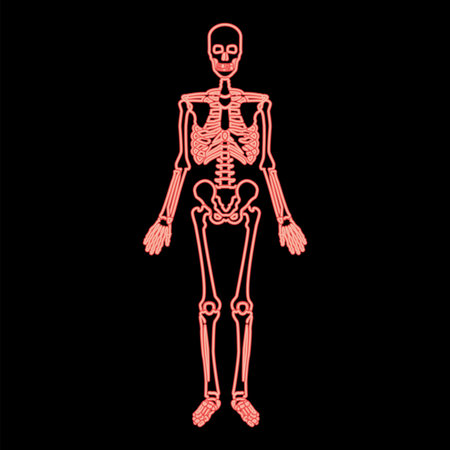Introduction to Electrical Stimulation Therapy Devices
Electrical stimulation therapy devices, often called e-stim devices, have become an important tool in modern rehabilitation and pain management across the United States. These devices use mild electrical currents to stimulate muscles and nerves, helping with everything from muscle re-education after injury to managing chronic pain conditions. Their popularity is growing not just in clinics and hospitals, but also for personal use at home.
Overview of Electrical Stimulation Therapy
At its core, electrical stimulation therapy involves sending controlled electrical impulses through electrodes placed on the skin. These impulses can trigger muscle contractions or modulate nerve activity, depending on the settings used. The main types of e-stim devices include:
| Device Type | Main Purpose | Common Applications |
|---|---|---|
| TENS (Transcutaneous Electrical Nerve Stimulation) | Pain relief | Chronic pain, arthritis, back pain |
| NEMS (Neuromuscular Electrical Stimulation) | Muscle activation and strengthening | Post-surgical rehab, stroke recovery, muscle atrophy prevention |
| IFC (Interferential Current Therapy) | Deep tissue pain relief | Joint injuries, edema reduction |
| Russian Stimulation | Intense muscle strengthening | Athletic training, post-injury muscle building |
Applications in Rehabilitation and Healthcare Settings
E-stim devices are widely used by physical therapists and other healthcare professionals in the US to help patients recover from injuries, surgeries, strokes, and other conditions that affect movement or cause pain. They can aid in reducing inflammation, improving blood flow, preventing muscle loss during periods of immobility, and controlling acute or chronic pain without relying solely on medication.
The Growing Use of E-Stim at Home
With advancements in technology and increasing awareness about non-pharmaceutical therapies, many Americans are now using compact, easy-to-operate e-stim devices at home. This shift allows patients to continue their rehab routines independently between clinic visits or manage ongoing pain conveniently. The availability of user-friendly models—often with preset programs tailored for specific needs—makes it easier than ever for people to take charge of their own recovery.
Summary Table: E-Stim Usage Across Settings
| Setting | Main Users | Typical Devices Used |
|---|---|---|
| Clinics & Hospitals | Physical therapists, physicians, occupational therapists | TENS, NMES, IFC, Russian Stimulators (professional-grade) |
| Home Use | Patients recovering from injury or surgery; individuals managing chronic pain | TENS units, portable NMES devices (consumer-friendly models) |
| Athletic Facilities | Athletes, trainers, sports therapists | Russian Stimulators, advanced NMES units |
This widespread adoption highlights how electrical stimulation therapy has become a cornerstone of both professional rehabilitation protocols and everyday health management for many Americans.
2. Types of Electrical Stimulation Devices
When exploring electrical stimulation therapy devices in the United States, it’s important to understand the different types available, their key features, and how each one is used. Below, we’ll break down some of the most common device categories you’ll find on the US market and explain what sets them apart.
TENS (Transcutaneous Electrical Nerve Stimulation)
TENS devices are popular for pain management. They use low-voltage electrical currents delivered through pads placed on the skin. TENS is widely used at home and in clinics for conditions like chronic back pain, arthritis, and nerve pain. The main goal is to block pain signals from reaching the brain and sometimes to stimulate endorphin production.
EMS (Electrical Muscle Stimulation)
EMS devices target muscle contraction by sending electrical impulses directly to muscle fibers. These are often used for muscle strengthening, recovery after injury, or preventing muscle atrophy (wasting) when someone can’t be active. EMS is commonly used by athletes, physical therapists, and patients recovering from surgery.
NMES (Neuromuscular Electrical Stimulation)
NMES devices are similar to EMS but are usually more advanced. They are specifically designed to stimulate nerves that cause muscles to contract, often in people with neurological conditions such as stroke or spinal cord injuries. NMES can help improve muscle tone, function, and sometimes even retrain muscles after an injury.
IFC (Interferential Current Therapy)
IFC uses two high-frequency electrical currents that intersect beneath the skin, creating a deeper stimulation than TENS. It’s mostly used in clinical settings for pain relief and reducing inflammation in deeper tissues.
Other Device Categories
- Microcurrent Therapy: Uses very low-level currents for wound healing and tissue repair.
- Russian Stimulation: A type of EMS with specific waveforms, often used for athletic training and muscle strengthening.
- Iontophoresis: Delivers medication through the skin using electrical currents, mainly for inflammation or localized pain.
Comparison Table: Common Electrical Stimulation Devices in the US
| Device Type | Main Purpose | Common Indications | Typical Users |
|---|---|---|---|
| TENS | Pain Relief | Chronic/back pain, arthritis, neuropathy | Home users, clinics |
| EMS | Muscle Strengthening/Recovery | Muscle weakness, post-surgery rehab | Athletes, patients post-injury/surgery |
| NMES | Neuromuscular Re-education | Stroke rehab, neurological disorders | Clinics, specialized rehab centers |
| IFC | Pain Relief/Inflammation Reduction | Deep tissue pain/inflammation | Physical therapy clinics |
| Iontophoresis | Medication Delivery through Skin | Tendinitis, localized inflammation/pain | Physical therapy clinics, doctors’ offices |
| Microcurrent/Russian Stim. | Tissue Healing/Muscle Training | Tissue repair/athletic training/muscle growth | Athletes, rehab professionals |
The wide variety of electrical stimulation devices means there’s often a solution tailored to your specific needs—whether you’re looking for at-home pain management or targeted rehabilitation after an injury. Understanding these differences helps you make informed decisions about what device might be right for your situation and discuss options with your healthcare provider.

3. Key Features and Technology Comparison
When choosing an electrical stimulation therapy device in the US, understanding the core features and technologies is crucial. These factors not only affect how well the device works but also how easy and safe it is to use in everyday life. Let’s break down the most important aspects: programmability, ease of use, portability, safety standards, and integration with mobile health platforms.
Essential Features to Consider
| Feature | Why It Matters | What to Look For |
|---|---|---|
| Programmability | Allows users and clinicians to customize treatment intensity, duration, and frequency for individual needs. | Devices with multiple modes, adjustable settings, and pre-set therapy programs. |
| Ease of Use | Makes daily therapy less stressful for patients at home or on the go. | Intuitive controls, clear displays (digital or touchscreen), and simple instructions. |
| Portability | Important for those who travel or need treatment outside clinical settings. | Compact size, lightweight design, rechargeable batteries, belt clips or carrying cases. |
| Safety Standards | Keeps users protected from malfunction or misuse and ensures FDA compliance in the US. | FDA clearance, automatic shut-off features, overcurrent protection, clear labeling. |
| Mobile Health Integration | Lets users track progress and adjust therapy using smartphones or tablets. | Bluetootht connectivity, companion apps for iOS/Android, cloud data storage for sharing with healthcare providers. |
Main Technology Differences Among Devices
TENS vs EMS vs IFC Devices
| Device Type | Main Purpose | Typical Users |
|---|---|---|
| TENS (Transcutaneous Electrical Nerve Stimulation) | Pain relief through nerve stimulation; often used for chronic pain management. | People with back pain, arthritis, neuropathy. |
| EMS (Electrical Muscle Stimulation) | Muscle strengthening, re-education after injury or surgery. | Athletes, post-surgical patients, stroke survivors. |
| IFC (Interferential Current Therapy) | Pain relief and deeper tissue stimulation using intersecting currents. | Pain clinic patients with deep tissue pain conditions. |
Real-Life User Experience in the US Context
American users often prioritize devices that can be easily integrated into busy lifestyles. Many prefer wireless models that sync with their smartphones so they can keep up with their rehab progress even while at work or running errands. US safety standards are strict—always look for FDA-cleared devices to ensure quality and reliability. Portability is a must-have feature for people who like to stay active or travel frequently. Lastly, easy-to-use interfaces mean patients can stick to their routines without needing technical support every step of the way.
User-Friendly Tips:
- If you want something simple for occasional pain relief at home, focus on TENS units with clear presets and basic controls.
- If you’re looking to rebuild muscle strength after an injury or surgery, consider an EMS unit with programmable settings tailored by your physical therapist.
- If digital health tracking matters to you, make sure your device pairs with a reliable app and offers regular updates compatible with your phone’s operating system.
- No matter which device you choose, always check that it meets current US safety certifications before purchase.
This comparison helps guide you through the essential technological differences so you can select the right electrical stimulation therapy device suited to your needs in the US market.
4. Efficacy and Clinical Evidence
Review of US-Based Clinical Studies
When comparing electrical stimulation therapy devices in the United States, it is essential to look at what clinical research says about their effectiveness. Several studies conducted by American hospitals and universities have focused on different types of devices, such as TENS (Transcutaneous Electrical Nerve Stimulation), NMES (Neuromuscular Electrical Stimulation), and IFC (Interferential Current). These studies often measure pain relief, muscle strength improvement, and recovery speed in various patient groups, including those with chronic pain, post-surgical needs, or neurological conditions.
Patient Outcomes from Major Studies
| Device Type | Condition Treated | Reported Outcome | Study Reference |
|---|---|---|---|
| TENS | Chronic Low Back Pain | Pain reduction in 60% of patients after 4 weeks of use | Mayo Clinic, 2021 |
| NMES | Knee Surgery Recovery | Faster muscle strength recovery compared to exercise alone | Cleveland Clinic, 2020 |
| IFC | Shoulder Pain & Mobility Issues | Improved range of motion and reduced discomfort in 70% of participants | Johns Hopkins University, 2019 |
| TENS/NMES Combo Units | Diabetic Neuropathy Symptoms | Significant decrease in tingling and numbness reported by users | Duke University Medical Center, 2022 |
Expert Recommendations for US Patients
Based on these findings, American physical therapists and rehabilitation doctors often recommend starting with TENS units for general pain management because they are easy to use at home and have a good track record for safety. For patients needing targeted muscle strengthening—such as those recovering from surgery or injury—NMES may be suggested. Interferential current devices are typically recommended when deeper tissue stimulation is needed for pain relief or increasing mobility.
The best results are usually seen when electrical stimulation therapy is combined with other treatments like physical therapy exercises and proper medical supervision. Experts also remind patients to follow device instructions closely and check with their healthcare provider before starting any new therapy.
5. Best Practices and Guidelines for Use in the US
Practical Considerations for Electrical Stimulation Therapy Devices
When choosing and using electrical stimulation therapy devices in the United States, there are several practical points to keep in mind. Each device may be designed for different conditions—such as pain relief, muscle re-education, or post-surgical recovery—so understanding your specific needs is key. Here are some important aspects to consider:
| Consideration | Description |
|---|---|
| Device Type | TENS, NMES, and IFC devices each have unique uses. TENS is common for pain management, NMES for muscle strengthening, and IFC for deeper tissue stimulation. |
| User Interface | Look for easy-to-understand controls and clear instructions. Many American users prefer devices with digital displays and preset programs. |
| Portability | Compact and lightweight units are ideal for at-home or on-the-go use. |
| Battery Life | Rechargeable batteries are popular, but make sure the device can last through your typical treatment session. |
| Electrode Options | Some devices offer reusable electrodes, while others require frequent replacement. Check availability and cost of replacements in the US market. |
FDA Regulations and Safety Standards
In the US, all electrical stimulation therapy devices must meet Food and Drug Administration (FDA) standards before they can be marketed or prescribed. The FDA evaluates these devices for safety and effectiveness based on their intended use. Always check that your device has proper FDA clearance (often listed as 510(k) approval). This ensures the device meets strict quality standards and includes appropriate labeling for home or clinical use.
Key Points About FDA Approval:
- Prescription vs. Over-the-Counter: Some devices require a healthcare provider’s prescription, while others are available OTC (over-the-counter).
- Labeling: All instructions should be in plain English and include warnings about who should not use the device (for example, people with pacemakers).
- Reporting Issues: Users or clinicians should report any side effects or malfunctions to both the manufacturer and the FDA through MedWatch.
Insurance Coverage in the US Healthcare System
Certain electrical stimulation therapy devices may be covered by insurance plans—including Medicare, Medicaid, or private insurers—if they are deemed medically necessary. Typically, coverage depends on a documented diagnosis from your healthcare provider and proof that other treatments have not worked.
| Payer Type | Coverage Notes |
|---|---|
| Medicare/Medicaid | Covers some TENS/NMES devices with proper documentation; prior authorization often required. |
| Private Insurance | Covers when prescribed by a licensed provider; varies by plan. |
| Out-of-Pocket | If not covered, patients can purchase devices online or at medical supply stores. |
Patient Education for Safe and Effective Use
A key part of successful therapy is making sure patients know how to safely use their device at home. Providers should give clear instructions on:
- How to Apply Electrodes: Placement charts or videos can help ensure correct positioning.
- Treatment Settings: Start with lower intensities and increase gradually as advised by a clinician.
- Treatment Time: Stick to recommended session lengths to avoid skin irritation or overstimulation.
- Troubleshooting: Know what to do if you experience discomfort or technical issues.
Recommended Resources:
- The device’s official user manual (in English)
- Your physical therapist or physician’s printed handouts or video links
- The manufacturer’s customer support hotline or website FAQs tailored for US customers
Recommendations for Optimal Device Use in the US Context
- Select an FDA-approved device suitable for your condition—consult with your doctor or physical therapist first.
- If you’re seeking insurance coverage, ask your healthcare provider to document medical necessity thoroughly.
- If buying out-of-pocket, compare features like battery life and electrode costs before purchasing from reputable US suppliers.
- Follow all provided safety instructions—never use electrical stimulation over open wounds, on broken skin, or near implanted electronic devices unless specifically cleared by your doctor.
By following these best practices and understanding how US regulations affect device selection and use, patients can get the most benefit from electrical stimulation therapy while minimizing risks.


